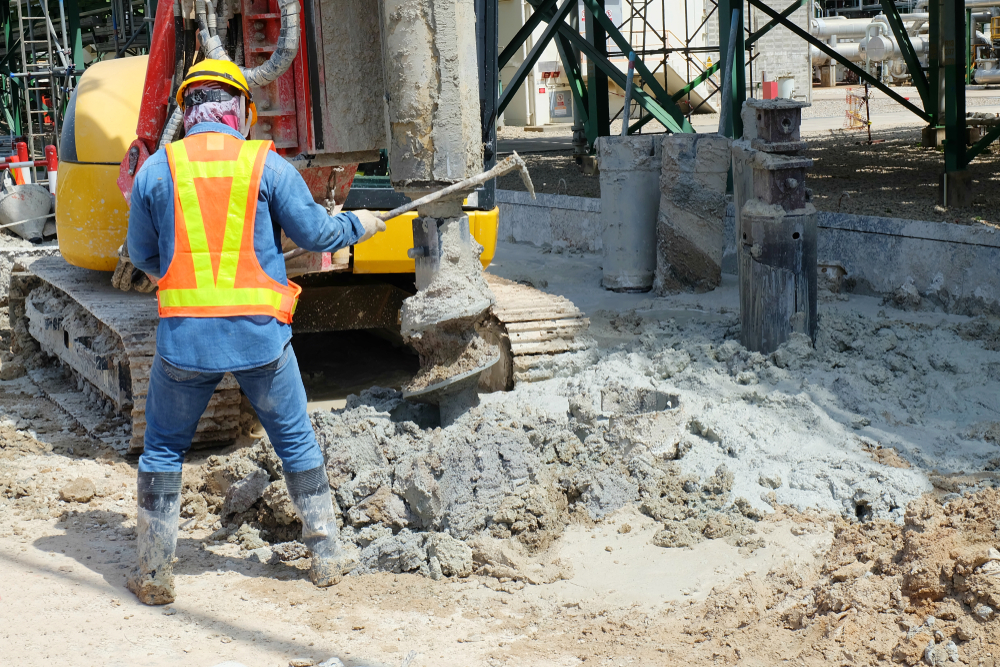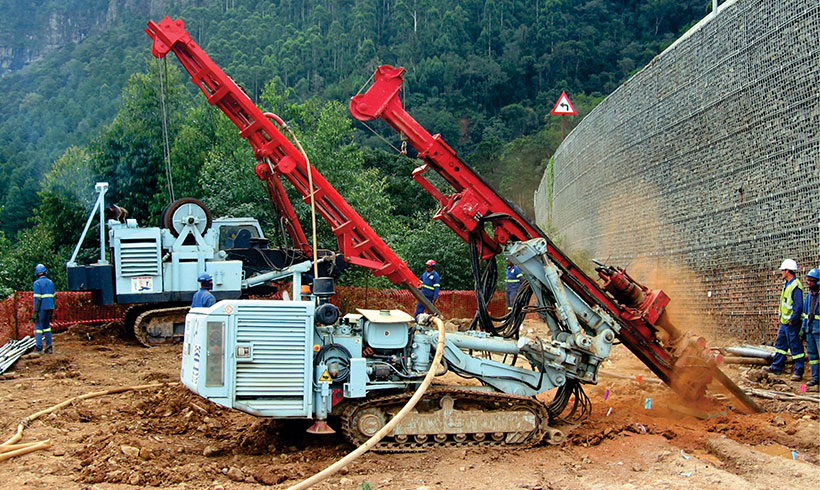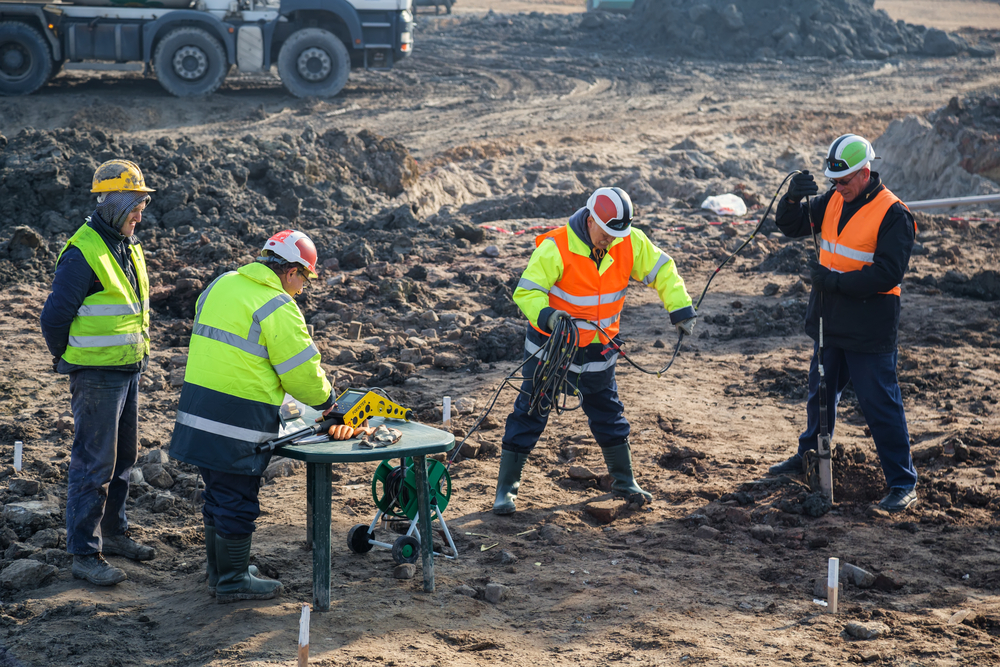Leading Reasons to Hire a Geotechnical Specialist for Your Construction Tasks
Leading Reasons to Hire a Geotechnical Specialist for Your Construction Tasks
Blog Article
The Relevance of Geotechnical Design in Attending To Ecological Difficulties and Enhancing Building Security
Geotechnical engineering serves as a cornerstone in the intersection of ecological stewardship and construction safety and security, giving crucial insights right into the actions of soil and rock under various conditions. This discipline not just addresses pushing ecological difficulties such as soil erosion and groundwater defense yet likewise enhances the effectiveness of framework versus natural hazards. By applying critical site examinations and customized mitigation actions, geotechnical designers play an important role in securing both human lives and environmental integrity. Yet, the intricacies of these difficulties raise crucial questions concerning the future direction of this area and its ramifications for sustainable advancement.

Role of Geotechnical Design
Geotechnical design plays an essential duty in the style and building of facilities by dealing with the actions of dirt and rock products under different conditions. This area of design is necessary for understanding the interaction between frameworks and the ground, which includes identifying the load-bearing capacity of soil, evaluating stability, and forecasting possible settlement or failing.
Geotechnical designers are accountable for conducting website investigations, which entail tasting and testing dirt and rock to collect information on their chemical and physical residential properties. This info is vital for making foundations, retaining walls, and other earth-retaining frameworks that guarantee safety and security and durability. Furthermore, geotechnical design notifies the choice of ideal building methods and products, thus decreasing risks linked with soil actions.
Furthermore, the combination of geotechnical engineering principles right into urban planning and environmental management is important for addressing difficulties such as ground contamination and groundwater administration. By recognizing geotechnical aspects, designers can develop sustainable remedies that enhance the durability of framework against natural dangers, while additionally promoting environmental stewardship. Eventually, the function of geotechnical design is essential for accomplishing secure, durable, and environmentally mindful construction methods.
Dirt Disintegration Reduction
Dirt disintegration poses a substantial risk to both environmental stability and facilities stability, influencing about 24 billion heaps of productive dirt shed every year worldwide. This sensation is aggravated by variables such as logging, urbanization, and inadequate farming techniques. Geotechnical design plays a crucial duty in creating effective soil erosion mitigation strategies that safeguard both the environment and building and construction jobs.
One technique involves the application of erosion control methods such as plant life growing, which maintains soil with origin systems. Additionally, the construction of keeping walls and terraces can successfully minimize surface runoff and secure prone areas from erosion. Correct drain design is additionally vital; it lessens water accumulation and routes excess overflow away from critical frameworks.
Moreover, geotechnical designers utilize soil stablizing methods, such as the application of geotextiles and biodegradable floor coverings, to enhance dirt cohesion and prevent destruction - all about geotechnical engineering. Routine surveillance and assessment of erosion-prone websites allow prompt interventions, making certain long-lasting sustainability. By incorporating these techniques, geotechnical design not only alleviates the impacts of dirt disintegration however additionally adds to the durability of framework against ecological challenges, eventually cultivating a safer and a lot more sustainable developed setting
Groundwater Protection Methods
Groundwater works as an important source for drinking water, agriculture, and commercial procedures, making its protection vital for ecological sustainability and public health. Efficient groundwater defense strategies are vital in reducing contamination risks and guaranteeing the durability of this source.

Normal tracking of groundwater quality is likewise important, making it possible for early discovery of contamination resources and assisting in timely removal initiatives. Utilizing innovative innovations, such as geophysical studies and remote picking up, help in recognizing prospective hazards to groundwater books.
In addition, public education and stakeholder interaction are crucial, promoting area support for groundwater security campaigns. geotechnical specialist. By integrating governing actions, technological innovations, and community involvement, we can produce a thorough framework that safeguards groundwater resources while promoting sustainable growth and building and construction practices
Landslide Danger Administration
Landslides posture significant risks to both human safety and facilities, making efficient danger monitoring approaches important. Geotechnical engineering plays a vital function in identifying, analyzing, and mitigating landslide risks. An extensive understanding of slope stability, soil mechanics, and hydrology is important for establishing efficient danger administration strategies.
The initial step in landslide danger management involves extensive site investigations, which include geological mapping and soil screening. These examinations assist engineers examine the potential for landslides by recognizing crucial elements such as slope angles, soil structure, and water material. Utilizing advanced technologies such as remote picking up and geophysical studies can enhance the accuracy of these assessments.
As soon as dangers are determined, suitable reduction actions can be executed. These may consist of design services such as retaining wall surfaces, drain systems, and slope stabilization methods. Keeping track of systems should be developed to spot indicators of ground movement and adjustments in water levels, allowing for positive treatments.

Enhancing Building Security
Construction sites frequently present a myriad of hazards that can jeopardize worker safety and security and task honesty. Geotechnical design plays an important function in improving construction safety by providing essential understandings into subsurface problems. Through comprehensive soil and rock analysis, geotechnical engineers can identify potential dangers, such as dirt instability, groundwater problems, and seismic susceptabilities, which might endanger the safety and security company website of construction tasks.
Implementing geotechnical solutions, such as appropriate foundation style and using keeping structures, mitigates these threats substantially. These options not just make sure the stability of the frameworks being constructed yet additionally develop a safer working environment for building workers. Furthermore, extensive tracking and assessment of site conditions throughout the building and construction process are critical. Making use of advanced innovations like ground-penetrating radar and inclinometer systems makes it possible for real-time data collection, permitting prompt treatments when hazards are spotted.
Moreover, promoting a society of safety and security with training and adherence to established safety procedures further boosts building and construction website safety and security. By integrating geotechnical knowledge into the preparation and implementation phases, building and construction projects can achieve greater security criteria, inevitably safeguarding employees and making sure effective task completion.
Final Thought
In conclusion, geotechnical design offers as a crucial discipline in promoting and taking on environmental difficulties building and construction safety. Via efficient soil erosion mitigation, groundwater security methods, and landslide risk monitoring, geotechnical designers add to the development of durable framework.
Geotechnical design serves as see a foundation in the intersection of environmental stewardship and construction safety, offering important understandings right into the habits of soil and rock under numerous problems. Geotechnical design educates the choice of appropriate building and construction techniques and materials, thus decreasing threats linked with dirt actions.
Geotechnical engineering plays an essential duty in developing efficient dirt disintegration mitigation approaches that safeguard both the atmosphere and building and construction projects.
Furthermore, geotechnical engineers utilize soil stablizing techniques, such as the application of geotextiles and naturally degradable mats, to improve soil communication and prevent deterioration. With thorough soil and check over here rock evaluation, geotechnical engineers can recognize prospective risks, such as dirt instability, groundwater problems, and seismic susceptabilities, which might compromise the security of building and construction activities.
Report this page